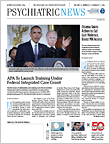Alzheimer’s disease affects cognition and memory, and those deficiencies readily manifest themselves in the way that someone speaks and writes. For years now, researchers have been examining how language might be used to identify or predict Alzheimer’s or other types of dementia.
One effort known as the Nuns Study, which was started in 1990, examined the written biographies of women who had joined a convent and found that the complexity of the writing was a strong indicator of who might develop dementia later in life. More recently, in 2009, a pair of researchers at the University of Toronto analyzed Agatha Christie’s novels and found changes in syntax and complexity that supported the belief that she had Alzheimer’s.
Of course, not everyone has a literary trove that can be used to help make a diagnosis of Alzheimer’s, but with recent technological advancements, that may no longer be necessary.
A report published October 15 in the Journal of Alzheimer’s Disease found that language-processing software can differentiate people with Alzheimer’s from healthy subjects using only a short segment of language.
One hundred and sixty-seven patients diagnosed with “possible” or “probable” Alzheimer’s and 97 healthy controls were tasked with describing the same picture, and their narratives—which averaged a little over 100 words and included both audio and transcribed files—were then analyzed by a comprehensive software program that examined 370 distinct elements of speech.
On the basis of subtle differences in language, the program was able to accurately differentiate subjects in the two groups, reaching a maximum accuracy of about 82 percent when using a set of 35 speech features.
These 35 differences primarily clustered in four distinct categories: semantic impairment (using overly simple words), acoustic impairment (speaking very slowly), syntax impairment (using less complex grammar), and information impairment (not clearly identifying the main aspects of the picture).
“The importance of acoustics was intriguing and somewhat unanticipated,” said study coauthor Frank Rudzicz, Ph.D., an assistant professor of computer science at the University of Toronto (who trained under Graeme Hirst, one of the Agatha Christie researchers). “But it shows how new technologies can build on earlier research and help us develop more accurate and cost-effective diagnostic tools.”
Rudzicz, who carried out this research along with University of Toronto colleagues Katie Fraser, a Ph.D. student, and Jed Meltzer, Ph.D., told Psychiatric News that he envisions that someday this software could be a publicly available tool that people could use to self-diagnose any potential dementia risk, which would then be a basis for a more comprehensive clinical evaluation.
“The current tests needed to clinically evaluate someone for dementia are pretty rigorous and can take almost an entire day, so it’s not feasible for physicians to conduct these on all their patients on a regular basis,” he said.
Even as he explores the commercial potential, though, he sees more research potential as well.
“The relative speed and ease of analyzing the language data can enable us to closely study longitudinal changes in the brain,” he said. “Many other studies may take data from a patient only once or they come back one year later. But everyone has good days and bad days, and often a participant’s performance on a given test on a given day is not a true indicator of his or her disease state.”
Using the automated software can be akin to using the snap feature on cameras that take several continuous shots. A patient recites a narrative at periodic intervals over the course of weeks or months, and the software paints a detailed “photo” of the patient’s cognitive state.
“This is a well-done study that included a large number of patients and considered a wide range of speech variables,” said Cheryl Corcoran, M.D., an assistant professor of clinical psychiatry at Columbia University. She is part of a research team that recently demonstrated the ability of language recognition software to differentiate at-risk individuals who developed psychosis versus those who did not (November 6, 2015).
“Interestingly, there was overlap in key speech parameters with our prognostic study, in that both semantic and syntactic impairment are common in schizophrenia and Alzheimer’s. Specifically, there is impairment in the ability to maintain a theme throughout discourse, as well as a reduction in syntactic complexity—that is, using shorter sentences and fewer subordinate clauses.”
Corcoran said that she was also intrigued by the finding of acoustic impairments as a discriminating factor, and her group hopes to undertake similar acoustic studies shortly using audio files from their high-psychosis-risk cohort.
This study was supported by the Natural Sciences and Engineering Research Council of Canada, the Alzheimer’s Association, and Alzheimer Society of Canada. ■
An abstract of “Linguistic Features Identify Alzheimer’s Disease in Narrative Speech” can be accessed
here.

